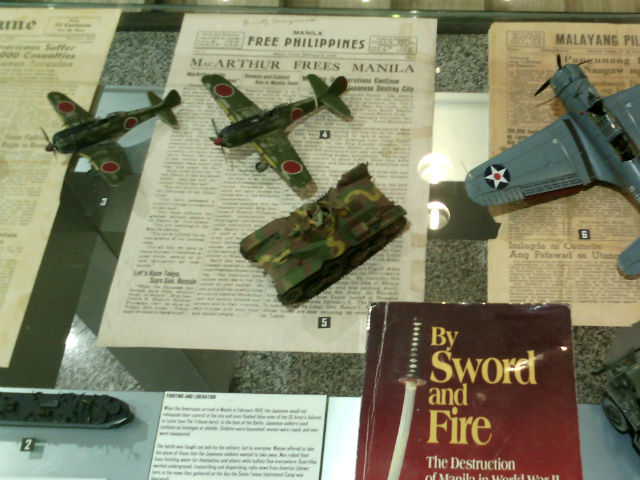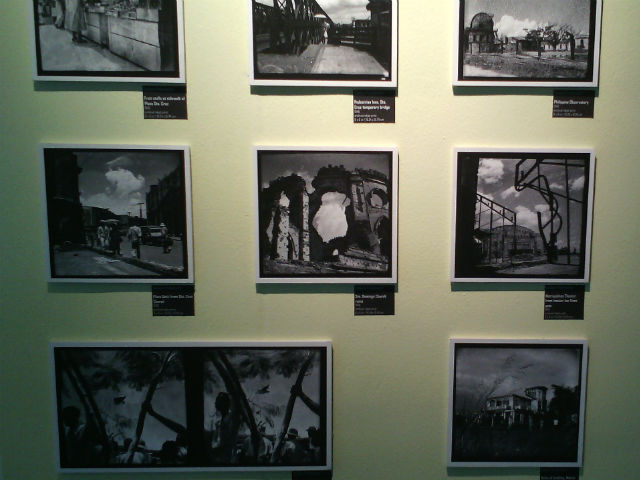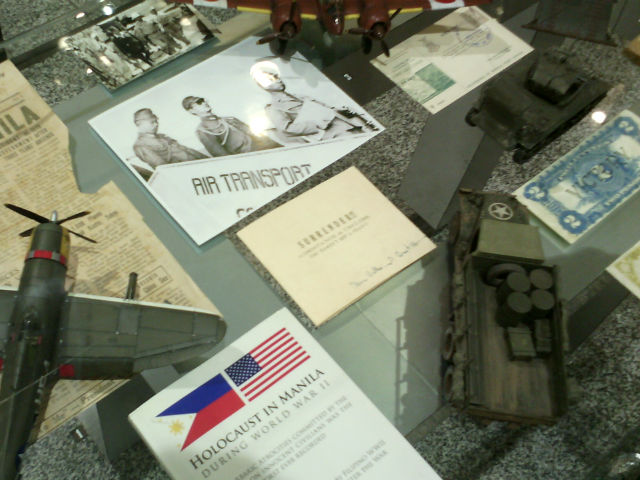Filtered by: Lifestyle
Lifestyle
The war we need to talk about: Month-long exhibit commemorates Battle of Manila
Text and photos by CARMELA GUANZON LAPEÑA

Memorabilia, books and Teudolo Protomartir's photos (below) are on display at the 'Manila: My City At War!' Filipinas Heritage Library until March 3.
Protomartir, regarded by some as the father of Philippine photography, was a prolific lens man. Even during the war when negatives were unavailable to Filipinos, he kept up his photography by improvising glass negatives painted with chemicals he concocted himself.
Though he did not capture the war itself, his images of Manila before and after the Japanese Occupation 70 years ago are haunting. “Protomartir was not able to shoot photographs of the war, the violence, the deprivation, all of that. But somehow, [from] the photographs of what happened, of what was left behind, and concentrating on the aesthetics of photography—because he did not just take the pictures, he composed them artistically—you almost feel spiritual about it. You feel the violence that transpired,” said Dela Cruz, who learned about Protomartir when he stumbled upon a camera of his in a shop in Kamuning.
The photo collection along with other memorabilia can be viewed in "Manila, My City at War!", a mini-conference and exhibit at the Filipinas Heritage Library commemorating the 70th year of the Battle of Manila. The exhibit includes items such as weapons, newspapers, postcards, and binoculars used by General Douglas MacArthur—reminders of a period in history which those who lived through it took years to even begin to talk about.

"They didn't have time to sit and deal with post-traumatic stress. They had [work] to do. But in doing this, they really had no time. A few words here and there, but my father never spoke about the war," Roderick Hall, whose collection on World War II is included in the exhibit, said of his parents' generation. Hall added that his generation didn't want to talk about the war, either.
“I didn't want them to know that I had gone through the war and lived in Manila during the liberation. None of us did. We wanted to be like everybody else. So we were silent,” said Hall, who was one of the founders of Memorare Manila 1945. “It took us 50 years.”
Hall had been among those brought by the Japanese to the Masonic Temple, where they executed 200 Filipinos.
Hall and his brother were released, but he never saw his other relatives again. It is uncertain what became of them, as conflicting records were found over the years. It is the desire to add to the story that drives collectors like Hall. “If we don't collect and we don't preserve, this information and this window that remains for us – we'll find it's gone forever. I encourage you to see what you have that can become a part of history for future generations,” Hall said during the exhibit opening on February 3.

“I didn't want them to know that I had gone through the war and lived in Manila during the liberation. None of us did. We wanted to be like everybody else. So we were silent,” said Hall, who was one of the founders of Memorare Manila 1945. “It took us 50 years.”
Hall had been among those brought by the Japanese to the Masonic Temple, where they executed 200 Filipinos.
Hall and his brother were released, but he never saw his other relatives again. It is uncertain what became of them, as conflicting records were found over the years. It is the desire to add to the story that drives collectors like Hall. “If we don't collect and we don't preserve, this information and this window that remains for us – we'll find it's gone forever. I encourage you to see what you have that can become a part of history for future generations,” Hall said during the exhibit opening on February 3.

Fortunately, there is plenty to uncover, including the accounts of those who were there. One example is "Surviving a Japanese Interment Camp: Life and Liberation of Santo Tomas Manila in WWII.” Recently published, the book is by Rupert Wilkinson, who died just last Christmas. At the exhibit opening, his nephew Robin Pettyfer spoke on his behalf, and talked about the relations between Filipinos and Americans, the internees and the Japanese, as well as the Japanese and the Filipinos. “Speaking about relations between groups when there has been so much suffering is difficult. All the more reason, then, to come together and share, so that conflict and loss and pain does not happen again,” Pettyfer said.
Among the many perspectives, there is of course that of the Filipino. Col. Emmanuel De Ocampo, who served in WWII as commander of the Hunters ROTC Guerillas, shared his own experience, highlighting the fact that the Philippine Army then was composed of young students from the university. “The army was brought to the battlefields because that was the only way the Philippines could defend itself,” he said. As expected, they were defeated in many places, but this did not stop them. Against orders, many of the Filipinos refused to surrender and instead took to the mountains, where they trained themselves to become soldiers in order to ambush the enemy.
“The first ambush was in the boundary of Laguna and Rizal. The Japanese were wiped out. They never knew that there were soldiers in the Sierra Madres, because there were no soldiers. These were children!” De Ocampo said, emphasizing that the Filipinos fought not as an elite group, but in defense of their country. “The Filipino people are not a warlike people,” he said. “But don't try to touch my country, because we will defend it to the last drop of blood.” — BM, GMA News
Manila, My City at War! runs until March 3 at Ayala Museum. For the conference schedule, email asklibrarian@filipinaslibrary.org.ph
Among the many perspectives, there is of course that of the Filipino. Col. Emmanuel De Ocampo, who served in WWII as commander of the Hunters ROTC Guerillas, shared his own experience, highlighting the fact that the Philippine Army then was composed of young students from the university. “The army was brought to the battlefields because that was the only way the Philippines could defend itself,” he said. As expected, they were defeated in many places, but this did not stop them. Against orders, many of the Filipinos refused to surrender and instead took to the mountains, where they trained themselves to become soldiers in order to ambush the enemy.
“The first ambush was in the boundary of Laguna and Rizal. The Japanese were wiped out. They never knew that there were soldiers in the Sierra Madres, because there were no soldiers. These were children!” De Ocampo said, emphasizing that the Filipinos fought not as an elite group, but in defense of their country. “The Filipino people are not a warlike people,” he said. “But don't try to touch my country, because we will defend it to the last drop of blood.” — BM, GMA News
Manila, My City at War! runs until March 3 at Ayala Museum. For the conference schedule, email asklibrarian@filipinaslibrary.org.ph
More Videos
Most Popular




